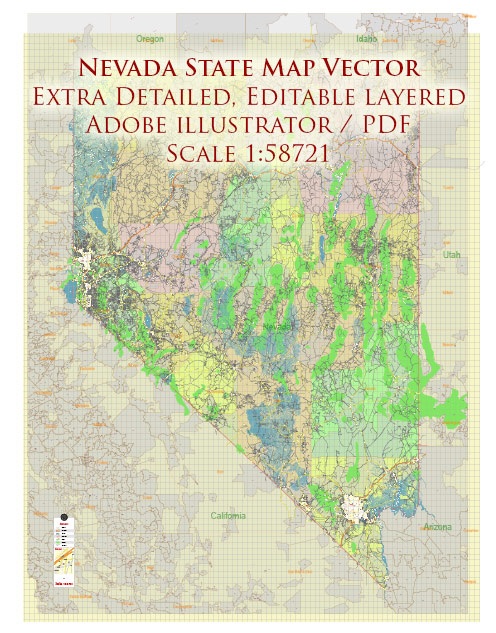The history of urban development in Nevada is shaped by a combination of natural resources, economic activities, and demographic trends. While Nevada is often associated with its expansive deserts and the allure of Las Vegas, the state’s urban development has a multifaceted history. Here’s a brief overview:
- Early Settlements and Mining Booms (19th Century): The first urban developments in Nevada emerged during the mid-19th century with the discovery of valuable minerals, especially silver and gold. Towns like Virginia City and Carson City grew rapidly as mining camps transformed into bustling urban centers. The Comstock Lode, one of the richest silver deposits in the world, played a crucial role in Nevada’s early urbanization.
- Railroads and Transportation (Late 19th Century): The expansion of railroads in the late 19th century was a key factor in Nevada’s urban development. Railroads facilitated the transportation of goods and people, connecting remote mining towns to each other and to major markets. This infrastructure development contributed to the growth of towns and cities.
- Decline and Resurgence (Early to Mid-20th Century): As mining activity fluctuated, some towns experienced decline in the early 20th century. However, the construction of the Hoover Dam during the Great Depression brought economic revitalization. Las Vegas, originally a railroad town, gained importance during the dam’s construction and would later become a major urban center.
- Military Presence and Atomic Testing (Mid-20th Century): The mid-20th century saw the influence of military activities on urban development, especially in Southern Nevada. The establishment of Nellis Air Force Base and the Nevada Test Site for atomic testing brought population growth and economic development to the region.
- Las Vegas and Entertainment (Mid-20th Century Onward): Las Vegas emerged as a major urban center, particularly in the mid-20th century, with the legalization of gambling in 1931. The city’s reputation as an entertainment destination grew with the development of the famous Las Vegas Strip, featuring iconic hotels and casinos.
- Population Growth and Suburbanization (Late 20th Century): The latter half of the 20th century witnessed significant population growth in Nevada, driven by factors such as tourism, entertainment, and the appeal of a relatively low-tax environment. Suburbanization became a noticeable trend as people moved to the outskirts of major cities for housing and employment opportunities.
- Diversification of Economy (Late 20th Century Onward): In recent decades, there has been a concerted effort to diversify Nevada’s economy beyond gaming and tourism. Cities like Reno have become hubs for technology and business, attracting companies seeking a favorable business environment.
- Challenges and Opportunities (21st Century): Nevada faces challenges related to water resources, environmental sustainability, and the need for infrastructure development. Balancing economic growth with environmental preservation is a key consideration for the state’s urban planners and policymakers.
Overall, Nevada’s urban development is a dynamic story influenced by economic shifts, natural resources, transportation infrastructure, and the ongoing pursuit of diversification and sustainability.


 Author: Kirill Shrayber, Ph.D.
Author: Kirill Shrayber, Ph.D.